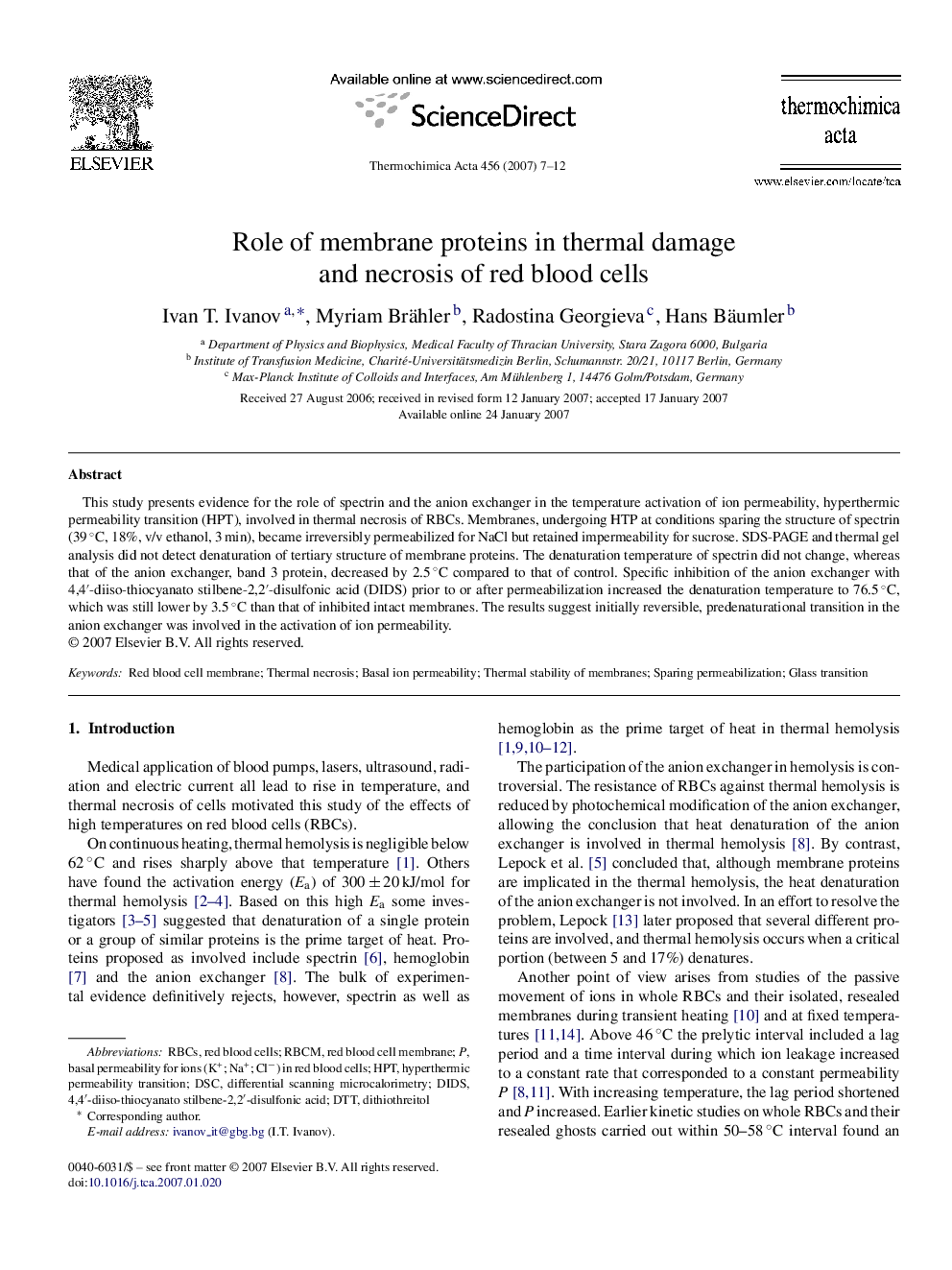| Article ID | Journal | Published Year | Pages | File Type |
|---|---|---|---|---|
| 675911 | Thermochimica Acta | 2007 | 6 Pages |
This study presents evidence for the role of spectrin and the anion exchanger in the temperature activation of ion permeability, hyperthermic permeability transition (HPT), involved in thermal necrosis of RBCs. Membranes, undergoing HTP at conditions sparing the structure of spectrin (39 °C, 18%, v/v ethanol, 3 min), became irreversibly permeabilized for NaCl but retained impermeability for sucrose. SDS-PAGE and thermal gel analysis did not detect denaturation of tertiary structure of membrane proteins. The denaturation temperature of spectrin did not change, whereas that of the anion exchanger, band 3 protein, decreased by 2.5 °C compared to that of control. Specific inhibition of the anion exchanger with 4,4′-diiso-thiocyanato stilbene-2,2′-disulfonic acid (DIDS) prior to or after permeabilization increased the denaturation temperature to 76.5 °C, which was still lower by 3.5 °C than that of inhibited intact membranes. The results suggest initially reversible, predenaturational transition in the anion exchanger was involved in the activation of ion permeability.
